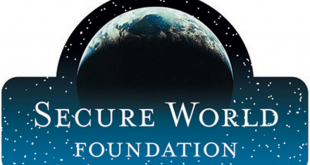As part of the partnership between SpaceWatch.Global and Project Ploughshares, we have been granted permission to publish selected articles and texts. This is Part 2 of “Did Russia Test a Weapon in Space? What the question and the answer tell us about the security of outer space”, originally published 30 July 2020 in Ploughshares Spotlight, July 2020. Part 1 was published yesterday here.
by Jessica West, Research contributed by Chris Earle
Was the event on July 15 an antisatellite test?

Russia’s activity was clearly a test of a new technical capability, but in the absence of a destroyed target, it is difficult to label that capability an ASAT with any certainty. As Russia asserted, the “tests carried out did not create a threat for other spacecraft.” But not all antisatellite tests are destructive. Historical data collected by Secure World Foundation indicates that only 15 of 74 identified ASAT tests have intercepted a target.
Many tests fail. But there are also reasons why an actor might choose not to conduct a destructive ASAT test. One is concern for the environment; the intentional destruction of objects in orbit creates significant clouds of debris that can linger in the space environment. And a direct hit in the location of the test (500-800 km above Earth) would have created a lot of debris. A non-destructive or flyby test, particularly in close proximity to other objects, allows testing of speed, reach, and precision of a system without causing debris.
It is known that the Soviet Union developed and tested co-orbital antisatellite weapons during the Cold War. The Space Security Index has documented efforts in recent years to revive several of these legacy programs. There are plausible indications (some say evidence) that Russia’s space-based inspection program is linked to an active ASAT program.
There are other plausible explanations. The event could be linked to an inspection or satellite-servicing experiment, as Russia maintains. It could also have been used to test sensors for applications such as missile detection. This uncertainty, and the multiple functions that space hardware and activities can support, is one of the challenges of space security.
Why can’t we be more certain of the facts?
Information on objects in orbit and their activities is a core part of Space Situational Awareness (SSA). While all states with active space programs and even amateur astronomers and satellite observers have knowledge of some orbiting objects, a complete and precise picture is beyond the capability of any single actor at present.
There is no global SSA system. Instead, surveillance and tracking of space objects are conducted by national actors. However, the sensitive military nature of most SSA data impedes both widespread data sharing, as well as trust in the data that is provided. Disparate data sets that report different orbital parameters also create a persistent challenge.
Not all orbital information is published—indeed, not all satellites are registered with the UN Registration Convention. Much of the public understanding of objects in space remains guesswork, particularly for more advanced and secret military operations, as well as for capabilities with multiple functions.
Finally, the global community has not developed clear definitions or understandings of either space weapons or bad behaviors in space that would be associated with weapons testing. One reason is because there is considerable overlap between the technical requirements for inspection and servicing capabilities and the development of space-based weapons.
Even if the behavior of the satellites does not appear to be consistent with the stated activities, the growing prevalence of similar orbital behavior, by the United States and China among others, makes it difficult to distinguish Russia’s actions on July 15 as an ASAT test, without more clear evidence.
Did the events of July 15 line up with international law and norms?
Russia has stated that its actions in July “did not breach any norms or principles of international law.” This is mostly because those norms and principles are so poorly developed.
Russia claims that it did not conduct an ASAT test, but what if it did? Such activity is not illegal. The 1967 Outer Space Treaty, which lays out the legal principles for the peaceful use of outer space, bans the placement of weapons of mass destruction in orbit, or on the Moon or other celestial bodies. It is silent on the use of conventional weapons.
Efforts to fill this gap have been stalled at the United Nations Conference on Disarmament (CD) for almost four decades. Russia and China have jointly proposed several initiatives at the CD, including a draft treaty on the Prevention of the Placement of Weapons in Outer Space and of the Threat or Use of Force against Outer Space Objects (PPWT).
They also support a political declaration of no-first-use of space weapons at the UN First Committee on International Security and Disarmament. Neither initiative has received sufficient support from the international community of states, particularly from Western states.
So, if Russia’s diplomatic efforts are considered, it must be said that its testing a weapon in space seems hypocritical, if not illegal. No other arms-control measures are in place. Instead of a ban on weapons, the United States and its allies emphasize the need to develop norms of responsible behavior. Did Russia engage in bad behavior? Here, too, the standards by which the international community can hold actors to account are currently weak.
Previous moratoria on the testing of antisatellite weapons have been voluntary and self-imposed. They began to unravel following China’s ASAT demonstration in 2007. At most, international outcry against this behavior has focused on the production of space debris. Fortunately, Russia’s activity did not produce debris.
Other norms have been developed to ensure the safety and sustainability of outer-space activities. Some of the following are relevant, but all are voluntary:
- Guidelines to prevent and mitigate the creation of space debris were adopted by the United Nations in 2008.
- In 2013, a UN Group of Governmental Experts adopted a consensus report that recommended a number of measures linked to enhanced information exchange about space objects and their function and also called for additional norms to promote spaceflight safety built on practices of notification and consultation.
- A set of voluntary guidelines to promote the long-term sustainability of outer-space activities based on 21 best practices was adopted by the UN Committee on the Peaceful Uses of Outer Space in 2019. It reiterates some of the 2013 recommendations, including efforts to improve accuracy of orbital data and the sharing of orbital information on space objects. While the guidelines are intended to apply to all space actors (including the military), they steer clear of military-specific activities.
Could Russia have acted more responsibly to allay international fears of what was seen as threatening behavior? Absolutely. Are there clear standards and processes through which to do this? No. And here lies the central problem.
Can we make outer space safer?
There have been numerous calls to develop rules or norms of behavior that could help to define threatening or potentially harmful activities. Some civil society organizations have done significant work along these lines.
Project Ploughshares work on the security of outer space points to the feasibility of extending existing rules and best practices associated with safety and sustainability to military and security activities. A recent survey of more than 100 global space experts suggests that these rules and practices—which relate to transparency, due diligence for safety, due regard for the environment, and collaboration—are both applicable and reasonable.
But progress requires political buy-in from states. On July 27, 2020, we saw an example of this. For the first time since 2013, the United States and Russia held a bilateral Space Security Exchange, with a focus on possible ways to regulate military activities in space. The U.S. State Department reported mutual interest in continuing to discuss ways to better manage security-related tensions through better communication.
Yet a political stalemate remained in place: Russia wants a treaty and the United States wants voluntary norms. Without more action, we risk entrenching the status quo. The status quo is not acceptable.
A secure outer-space environment needs better governance, arms control
Political tensions on Earth are rising. Meanwhile, various actors are developing new technical capabilities for use in outer space, with few measures in place to keep the peace and prohibit the use of space weapons. A simmering arms race in outer space could be about to boil over. Action to reduce tensions and restrict dangerous activities is needed now.
While we don’t know definitively if Russia conducted an ASAT test on July 15, it is fair to say that Russia has been testing advanced space-based capabilities that could have weapons applications. In this, it is not alone. But its behavior stands out and is clearly perceived by others as threatening, which is worth calling out.
More critically, this activity risks chipping away at the last threads of the taboo against orbiting of weapons systems in space, which holds the international commitment to peaceful purposes together. It also brings to life the long-held fear that weapons could secretly be orbiting in space.
What July 15 clearly shows is the poor state of international relations and governance in outer space. This event is one more wake-up call that urgent steps are needed to create better rules in space that make permitted activities more transparent, safer, and more predictable, while at the same time restricting or prohibiting those that are most dangerous and harmful.
The time may also be ripe to attempt to achieve arms-control agreements, which in other domains and at other times have been important in enhancing stability and security. As outer space is increasingly seen as a possible, even probable, site for warfighting by some of Earth’s most advanced military powers, it is only prudent to try to limit the damage in advance.
While concerns about dual-purpose and multi-use technology remain, the assertion that Russia launched an object with the “characteristics of a weapon” suggests that we may finally be ready to identify what those characteristics might be. There are practical and feasible steps rooted in existing norms of behavior that could be taken in the short term to enhance security in outer space. Such steps would increase the transparency of military space activities and help to build the trust needed to support long-term arms control measures.

Jessica West, PhD, is a Senior Researcher at Canadian peace research institute Project Ploughshares and Managing Editor of the Space Security Index annual publication. Her research and policy work is focused on technology, security, and governance. She holds a PhD in global governance and international security from the Balsillie School of International Affairs, Wilfrid Laurier University where she worked on the confluence of military and medical modes of containment and resilience.
 SpaceWatch.Global An independent perspective on space
SpaceWatch.Global An independent perspective on space




